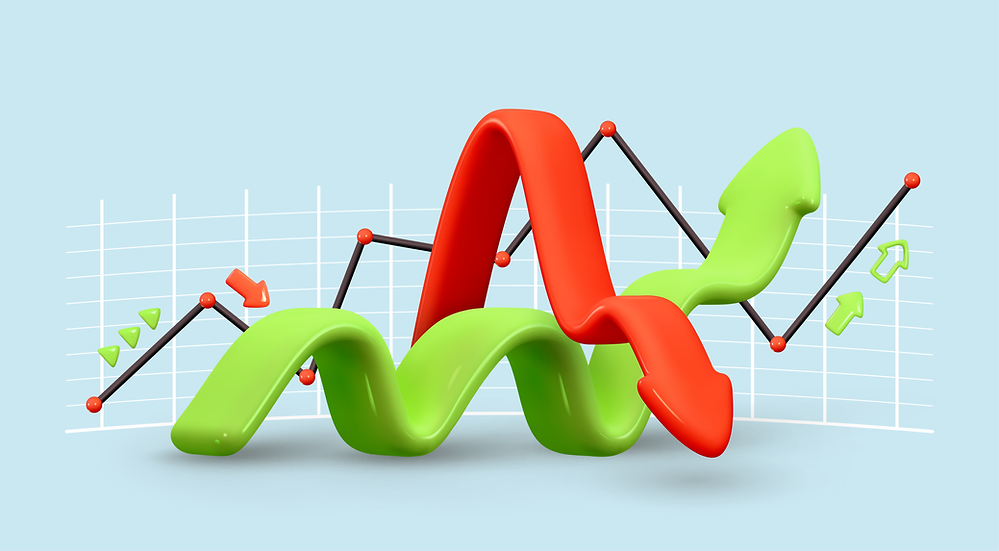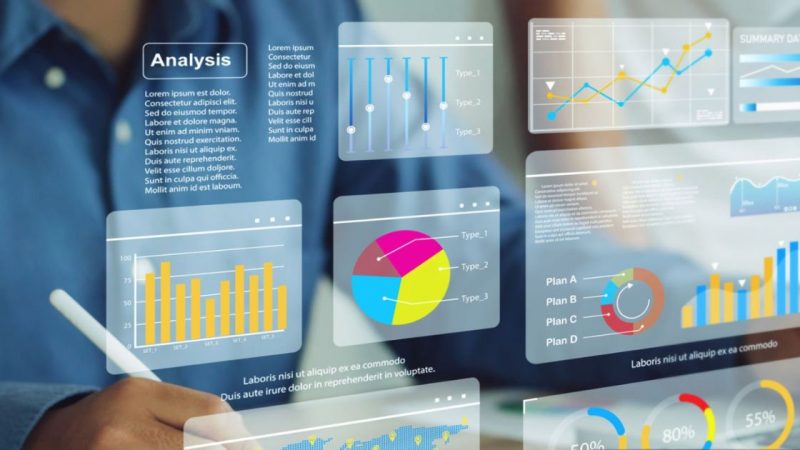Professionals in the fields of finance, business, and economics utilize trend analysis to identify historical and current market patterns in order to evaluate company performance and forecast potential shifts.
Then, with the help of data-driven decisions, this information is leveraged to improve strategies. Continue reading to discover all there is to know about trend analysis and examples of how you can apply it to decision-making for your organization both now and as you plan to grow.
What is Trend Analysis?
Trend analysis evaluates corporate financial tendencies inside a firm. It uses financial reports to forecast future performance or identify market trends using historical data records.
The process involves collecting data from prior performance records of past trends. Finance experts utilize these records to plot the information onto graphs or charts in order to identify economic patterns. By employing this technique, they are able to identify trend lines—grid columns connecting data sets that describe market pattern fluctuations.
The Three Types of Trend Analysis
1. Upward Trend (bull market)
An uptrend or an upward trend means that your data points are on the rise. Based on what type of variable you are examining and your purpose, this could have different meanings. For instance, you are a business owner looking at the price of raw materials required to produce bread, and you notice that the price is increasing. This information could help you make different predictions, such as increased costs for your business or the necessity of raising the prices for the final consumer.
At the same time, an investor looking at the share price of company X who noticed an upward trend might decide to buy the stock since the price is increasing. An upward movement in a stock’s price generally indicates a favorable condition, helping you to determine if the stock is a worthwhile investment.
2. Downward Trend (bear market)
On the other hand, a downward trend indicates the decreasing value of your variable. For example, when a market faces a prolonged price decline, we experience a down market. If an organization has more than a 20% decline, that company is going through a downtrend.
This trend is generally associated with a loss of business or a decrease in sales. It might also be a sign of declining performance. A decline in the value of company assets is another downward trend. It also applies when other financial and economic variables, such as stock prices, take a downward trend.
3. Horizontal Trend (Stagnation)
Finally, the horizontal line indicates a steady general direction. In other words, the prices, or any other metrics, are not going up or down; rather, they are stagnant.
In practice, a flat trend might go up for one period, then pull a trend reversal, reaching a steady general direction overall. Making investment decisions based on horizontal trends is risky because you do not know what will happen. However, if you decide to go with it, a sophisticated revenue and cost analysis regarding the sales regions must be implemented to calculate the risks.
Overcoming the Data Limitations
A significant challenge in trend forecasting is identifying when there will be a turn in business outcomes. Retrospectively, these turning points become more evident.
Additionally, it is challenging to identify whether these turning points are simple deviations or the beginning of a new trend. Long-term predictions will necessitate more data points.
But sometimes, such as after the launch of a new product, when there is a lack of historical data, this information is not readily available.
Time is another challenge when it comes to trend analysis of historical data. Predictions cannot be made using information that is too distant in the future. Time inevitably introduces fresh and unexpected factors. You risk making mistakes in your forecasts.
Examine your data and take action only when you are confident in your numbers to prevent committing these mistakes. Be aware not to depend too heavily on historical data or potential inaccuracies that might not accurately reflect current trends.
For instance, it’s possible that some pre-pandemic statistics don’t correspond to current data. Before the COVID-19 outbreak, 17% of the U.S. workforce worked remotely. Post-pandemic, It more than doubled, with 44% working from home during the global health crisis.

Source: Statista
Examples of Trend Analysis
Past events generally reflect future possibilities in business—and in life. This method can be used to detect trends and predict their continuation.
Among other things, you can also compare data points over a certain time period, key performance indicators (KPIs), sales performance, and customer purchasing patterns.
For example, trend analysis allows you to create sales commission forecasting reports to identify suitable and affordable sales incentives, bonuses, and other performance benefits.
To help you better comprehend this concept, below are a few additional examples of trend analysis in finance:
- Sales Patterns: Financial analysts can examine sales patterns to determine if they are rising or falling as well as the reasons behind these fluctuations. Sales patterns vary because of new customers, new products, or differing sales regions’ specifications.
- Expense Reports: Expense reports can be examined by accountants to verify that all payments are legitimate. In order to help financial experts make fair and honest judgments and projections, it might substantiate the data to show accurate deals.
- Budget Forecasting: In order to forecast future outcomes and develop budgets, financial analysts can estimate costs and revenues. Budget planning helps businesses maximize earnings and get ready for potential future downward trends.
- Expenditure Tracking: Finance professionals can observe operating expense line items during any reporting period. It allows these experts to identify any abnormal expenditures to investigate further.
Key Takeaways
Data availability for trend analysis enables improved data-driven decisions. It is an incredibly valuable tool for investors, business owners, and finance professionals.
- Trend analysis is the method of comparing an organization’s financial patterns. Financial reports are used to predict future performance or identify trends using historical data.
- Uptrends, downtrends, and horizontal trends are the three different types of trend analysis used in finance. Examples include budget, and expense tracking, expense reports, and sales patterns.
- Since historical data on some data sets, such as the sales performance of newly hired salespeople or the performance of new products, may not be readily available, identifying turning points can be challenging.





